
Ask a Policeman is a 1955 detective novel by E.C.R. Lorac, the pen name of the British writer Edith Caroline Rivett. It is the forty first in her long-running series featuring Chief Inspector MacDonald of Scotland Yard. Published by the Collins Crime Club, the title references the popular music hall song Ask a Policeman.
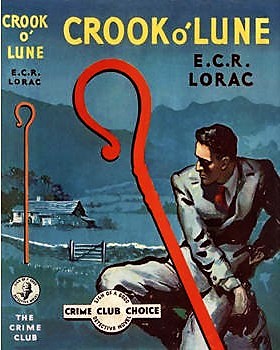
Crook O'Lune is a 1953 detective novel by E. C. R. Lorac, the pen name of the British writer Edith Caroline Rivett. It is the thirty eighth in her long-running series featuring Chief Inspector MacDonald of Scotland Yard, one of the more orthodox detectives of the Golden Age of Detective Fiction. It was published in the United States by Doubleday under the alternative title of Shepherd's Crook.

Still Waters is a 1949 detective novel by E. C. R. Lorac, the pen name of the British writer Edith Caroline Rivett. It is the thirty second in her long-running series featuring Chief Inspector MacDonald of Scotland Yard, one of the more orthodox detectives of the Golden Age of Detective Fiction.

Death Before Dinner is a 1948 detective novel by E.C.R. Lorac, the pen name of the British writer Edith Caroline Rivett. It is the thirtieth in her long-running series featuring Chief Inspector MacDonald of Scotland Yard, one of the detectives of the Golden Age of Detective Fiction who relies on standard police procedure to solve his cases. It was published in the United States by Doubleday under the alternative title of A Screen for Murder.
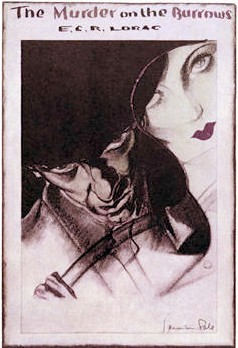
The Murder on the Burrows is a 1931 detective story by E.C.R. Lorac, the pen name of the British writer Edith Caroline Rivett. Her debut novel, it introduced the character of Chief Inspector MacDonald of Scotland Yard who went on to appear in a lengthy series of novels during the Golden Age of Detective Fiction. Although initially named James this is changed to Robert in later books. It takes place around Bideford Bay in North Devon where the author had spent several holidays.

Shroud of Darkness is a 1954 detective novel by E.C.R. Lorac, the pen name of the British writer Edith Caroline Rivett. It is the thirty-ninth in her long-running series featuring Chief Inspector Macdonald of Scotland Yard, one of the more orthodox detectives of the Golden Age of Detective Fiction.

Let Well Alone is a 1954 detective novel by E.C.R. Lorac, the pen name of the British writer Edith Caroline Rivett. It is the fortieth in her long-running series featuring Chief Inspector MacDonald of Scotland Yard, one of the more orthodox detectives of the Golden Age of Detective Fiction.

The Sixteenth Stair is a 1942 detective novel by E.C.R. Lorac, the pen name of the British writer Edith Caroline Rivett. It is the twenty second in her long-running series featuring Chief Inspector MacDonald of Scotland Yard, a Golden Age detective who relies on standard police procedure to solve his cases.
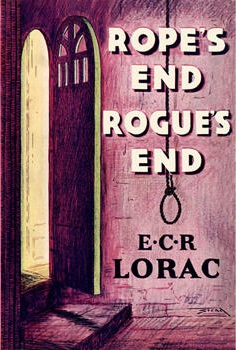
Rope's End, Rogue's End is a 1942 detective novel by E.C.R. Lorac, the pen name of the British writer Edith Caroline Rivett. It is the twenty first in her long-running series featuring Chief Inspector MacDonald of Scotland Yard, a Golden Age detective who relies on standard police procedure to solve his cases. It takes the form of the country house mystery, popular during the era.
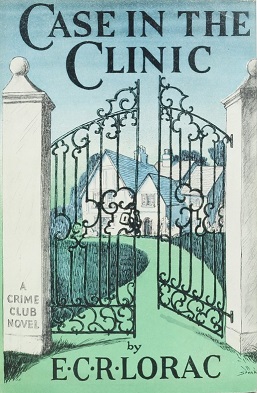
Case in the Clinic is a 1941 detective novel by E.C.R. Lorac, the pen name of the British writer Edith Caroline Rivett. It is the twentieth in her long-running series featuring Chief Inspector MacDonald of Scotland Yard, a Golden Age detective who relies on standard police procedure to solve his cases.

The Organ Speaks is a 1935 detective novel by E.C.R. Lorac, the pen name of the British writer Edith Caroline Rivett. It is the eighth book featuring Chief Inspector MacDonald of Scotland Yard who appeared in a lengthy series of novels during the Golden Age of Detective Fiction.

Death of an Author is a 1935 detective novel by E.C.R. Lorac, the pen name of the British writer Edith Caroline Rivett. It is a rare standalone book by Lorac, not featuring Chief Inspector MacDonald of Scotland Yard who appeared in a lengthy series of novels during the Golden Age of Detective Fiction. It was her final novel published by Sampson Low before, she switched to the more prestigious Collins Crime Club with whom she remained for the rest of her career.
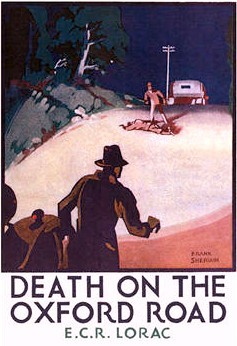
Death on the Oxford Road is a 1933 detective novel by E.C.R. Lorac, the pen name of the British writer Edith Caroline Rivett. It is the fifth book featuring Chief Inspector MacDonald of Scotland Yard who appeared in a lengthy series of novels during the Golden Age of Detective Fiction.

Murder in Chelsea is a 1934 detective novel by E.C.R. Lorac, the pen name of the British writer Edith Caroline Rivett. It is the seventh book featuring Chief Inspector MacDonald of Scotland Yard who appeared in a lengthy series of novels during the Golden Age of Detective Fiction.

Crime Counter Crime is a 1936 detective novel by E.C.R. Lorac, the pen name of the British writer Edith Caroline Rivett. It is the ninth in her long-running series featuring Chief Inspector MacDonald of Scotland Yard, a Golden Age detective who relies on standard police procedure to solve his cases. It was her first novel published by Collins Crime Club after switching from Sampson Low, partly on the success of the previous entry in the series The Organ Speaks. Collins then published the remainder the series.
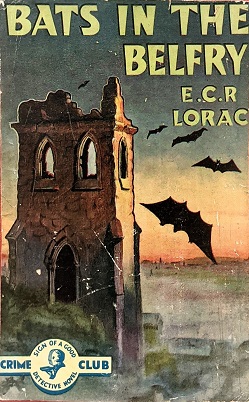
Bats in the Belfry is a 1937 detective novel by E. C. R. Lorac, the pen name of the British writer Edith Caroline Rivett. It is the thirteenth in her long-running series featuring Chief Inspector MacDonald of Scotland Yard, a Golden Age detective who relies on standard police procedure to solve his cases. Lorac wrote it in the summer of 1936 while staying with her mother at Westward Ho! in North Devon. Originally published by Collins Crime Club, it was reissued in 2018 by the British Library Publishing as part of a group of crime novels from the Golden Age of Detective Fiction.

Murder in St. John's Wood is a 1934 detective novel by E.C.R. Lorac, the pen name of the British writer Edith Caroline Rivett. It is the sixth book featuring Chief Inspector MacDonald of Scotland Yard, who appeared in a lengthy series of novels during the Golden Age of Detective Fiction.

The Case of Colonel Marchand is a 1933 detective novel by E.C.R. Lorac, the pen name of the British writer Edith Caroline Rivett. It is the fourth book featuring Chief Inspector MacDonald of Scotland Yard who appeared in a lengthy series of novels during the Golden Age of Detective Fiction.

Relative to Poison is a 1947 detective novel by E.C.R. Lorac, the pen name of the British writer Edith Caroline Rivett. It is the twenty ninth in her long-running series featuring Chief Inspector MacDonald of Scotland Yard, one of the detectives of the Golden Age of Detective Fiction who relies on standard police procedure to solve his cases.

The Theft of the Iron Dogs is a 1946 mystery detective novel by E.C.R. Lorac, the pen name of the British writer Edith Caroline Rivett. It is the twenty eighth in her series featuring Chief Inspector MacDonald of Scotland Yard. Originally published by Collins Crime Club, it was reissued in 2023 by the British Library Publishing as part of a group of crime novels from the Golden Age of Detective Fiction. It was published in the United States in 1947 under the alternative title Murderer's Mistake. Like the earlier Fell Murder it is set in the rural Lunesdale area of Lancashire.




















